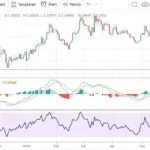The rise of social trading platforms has transformed the way people invest. What started as a niche concept—copying or following successful traders—has now become a mainstream strategy embraced by millions worldwide. In 2025, platforms like eToro, ZuluTrade, and NAGA continue to attract both new and experienced investors seeking collaboration, community, and convenience in the financial markets.
But while social trading offers accessibility and insight, it also carries unique risks. Understanding both sides is crucial before diving in. Let’s explore the pros and cons of social trading platforms in 2025, and whether they fit your investment style.
What Is Social Trading?
Social trading allows investors to observe, follow, and copy the trades of professional or high-performing traders. Instead of conducting independent research, users can leverage the expertise of others through automated copying tools or strategy-sharing features.
Think of it as “investing meets social media.” You can see traders’ performance stats, discuss strategies, and automatically mirror their moves — all within one platform.
Pros of Social Trading Platforms in 2025
1. Accessibility for Beginners
The biggest advantage of social trading is that it lowers the barrier to entry.
New investors can participate in markets like forex, stocks, and crypto without deep technical knowledge. By copying seasoned traders, beginners can learn by observing real-world strategies.
✅ Example: On platforms like eToro, users can automatically mirror the trades of top-performing investors through its CopyTrader™ feature — a powerful way to learn hands-on.
2. Community Learning and Collaboration
Social trading creates a community-driven ecosystem. Instead of trading in isolation, investors can exchange ideas, discuss market trends, and gain insights from diverse perspectives.
This social element helps build confidence, especially for newcomers, while experienced traders can showcase their performance and gain followers.
✅ 2025 Trend: Many platforms now integrate AI-assisted discussion forums that summarize insights from top traders, improving collaboration and learning efficiency.
3. Diversification Made Simple
Social trading platforms allow users to copy multiple traders or strategies simultaneously. This automatically diversifies your portfolio across different markets, assets, and risk levels.
✅ Example: You could copy one trader specializing in tech stocks and another focused on crypto or commodities — reducing exposure to any single market.
4. Transparency and Real Performance Data
Modern platforms now offer real-time analytics, showing each trader’s performance history, risk level, and average returns. This transparency helps users make informed decisions before copying someone’s trades.
✅ 2025 Update: Many platforms are now audited by regulatory bodies or independent third parties, adding an extra layer of trust and credibility.
5. Automation and Convenience
Once you select a trader to copy, the system automatically executes the same trades on your account. This makes it easier for those who lack time or expertise to stay active in the market.
✅ Tip: Most platforms allow you to set risk limits and stop copying at any time, giving flexibility even within automated trading.















